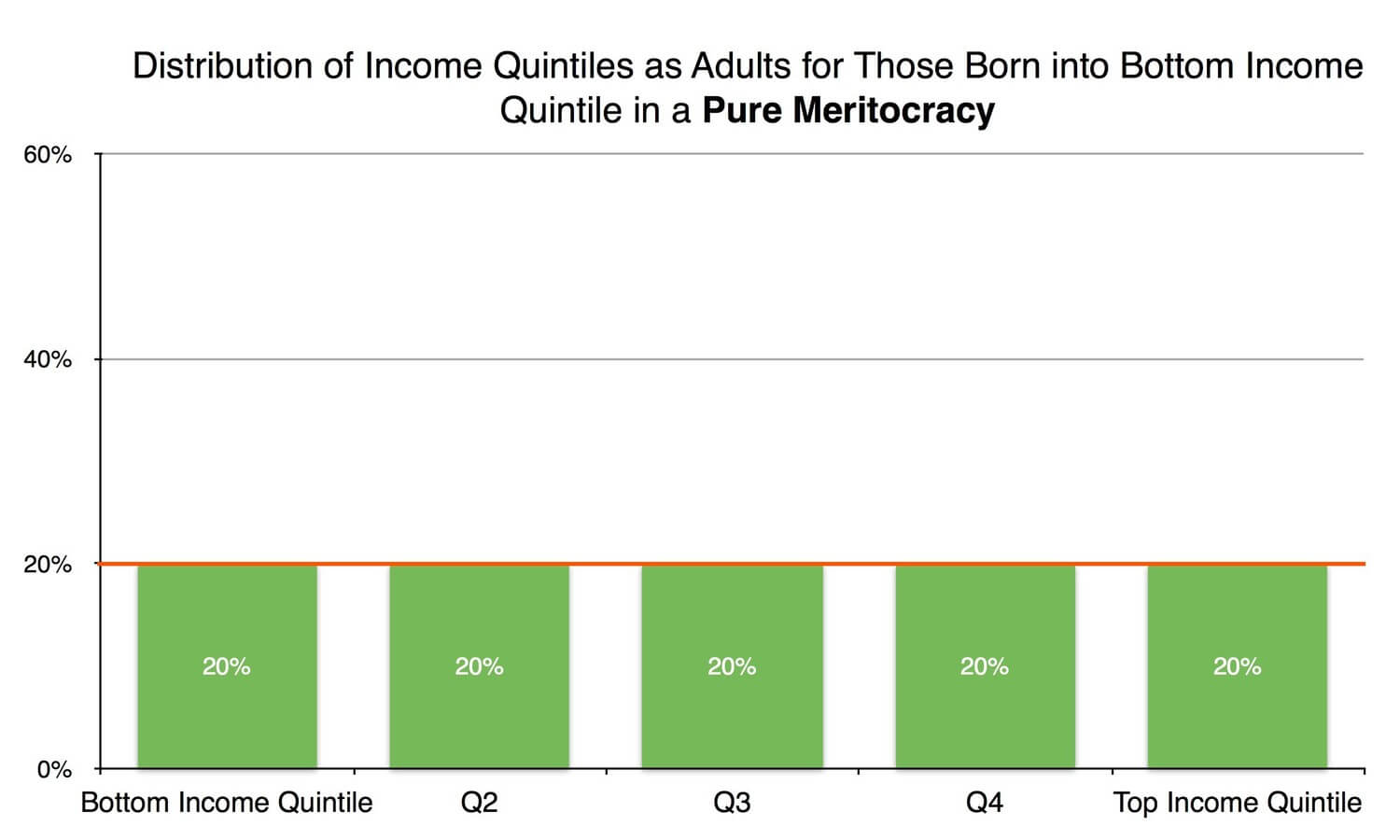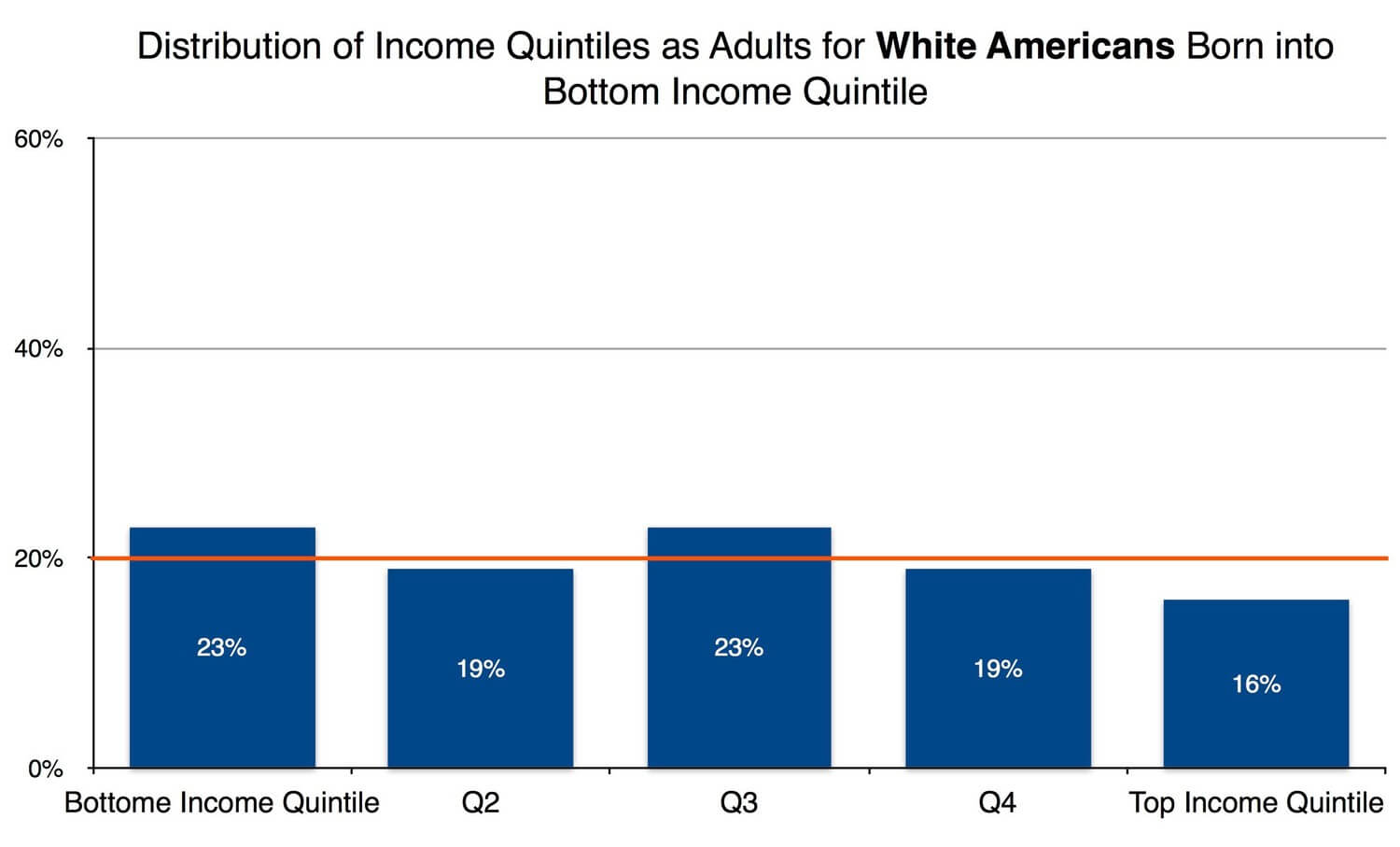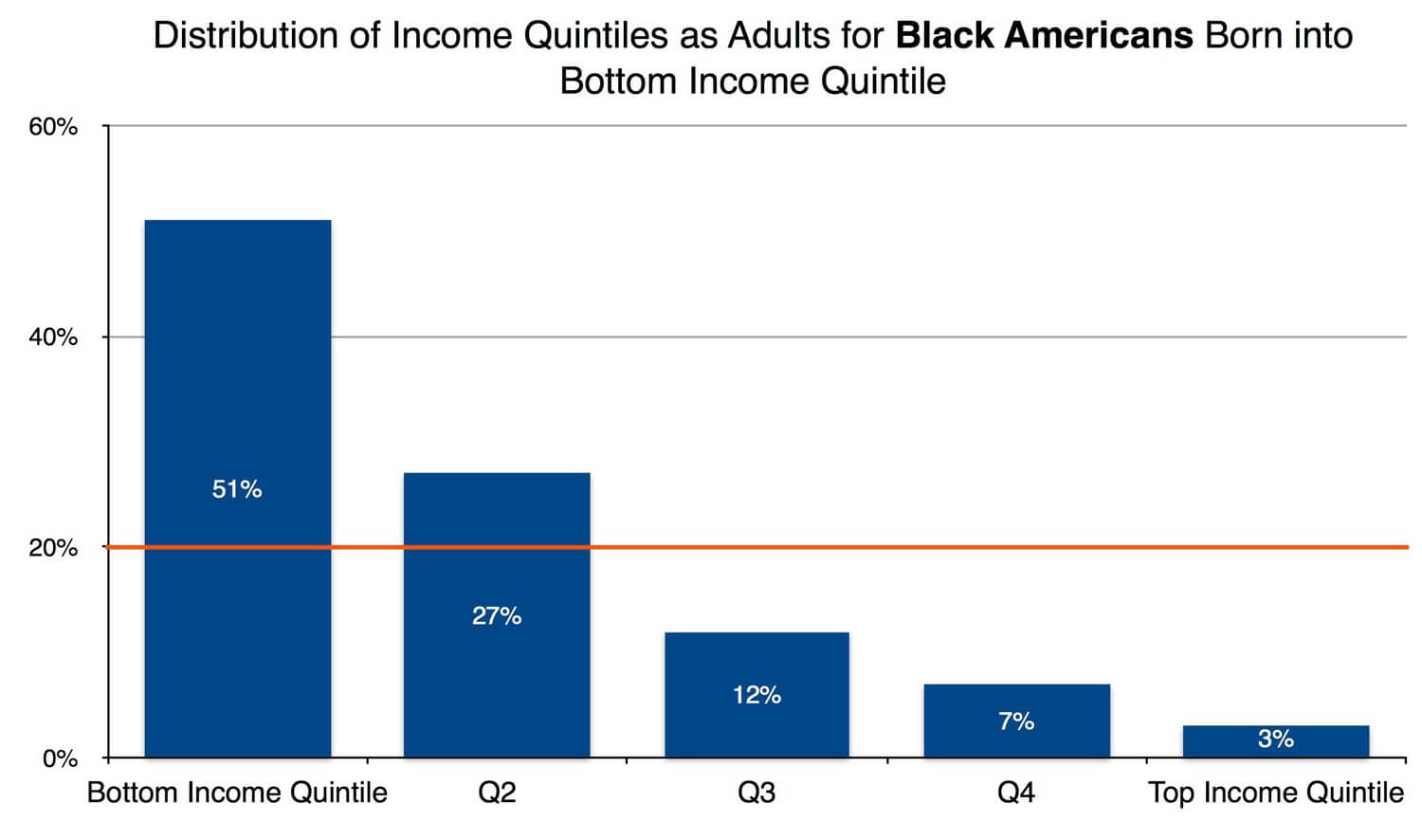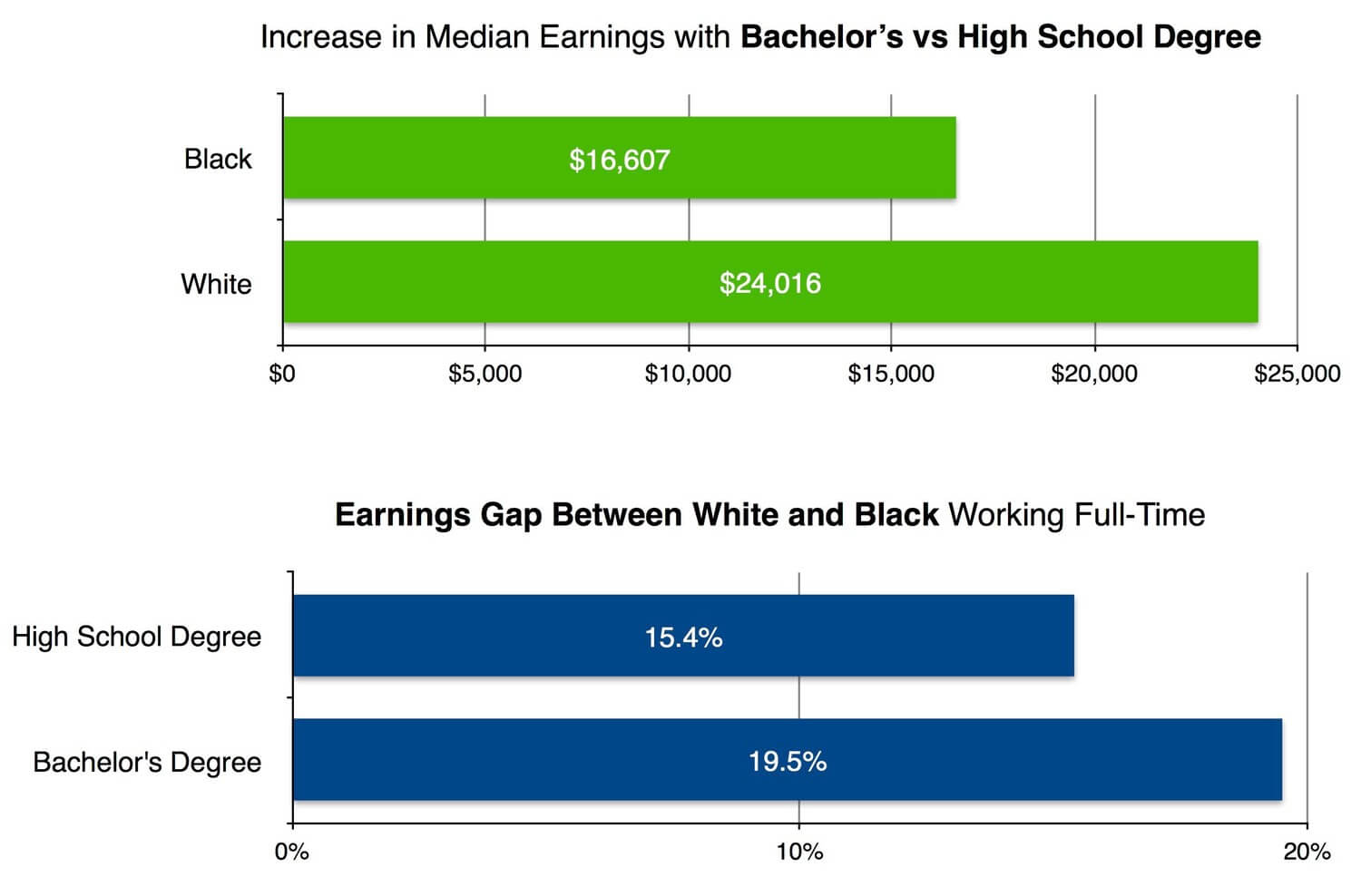Race, Education, and Opportunity in America
By: Kevin Donahue, MLT VP of Growth
We noted a recent Brookings Institution study by Richard V. Reeves entitled “Saving Horatio Alger: Equality, Opportunity, and the American Dream.” Reeves examines the impact of several factors on income mobility. As the head of strategy at Management Leadership for Tomorrow (MLT), a nonprofit dedicated to increasing diversity in leadership, I am particularly interested in the impact of race on income mobility.
Race and Income Mobility
As Americans, we tend to believe that each individual’s potential should be limited only by one’s natural talent and desire to work hard. It’s what we call “the American Dream” and what Reeves describes as “the freedom to get ahead and make something of yourself.” Moreover, “the idea that every child born into poverty can rise to the top” is frequently heard from our politicians on both sides of the aisle.
Despite our deep convictions, we’re doing a better job of delivering on this promise for some members of our society than for others. Reeves measures how close we are to achieving the ideal, by dividing our population into five income groups (quintiles) and analyzing the ability of children born into one income quintile to ascend to a higher rung on the income ladder as adults. How likely are people able to move into a higher income level than the one they were born to?
If we lived in a pure meritocracy where income potential was determined solely by one’s natural abilities and willingness to work hard, then an individual born into any one income group would have an equal chance of ending up in any other group as an adult. Since the income group one is born into has no impact on where one ends up, someone born into the lowest income level would have an equal chance of moving up to a higher income level. The below graph represents where individuals born into the poorest income quintile would end up as adults in a pure meritocracy:

Now that we have a baseline established, let’s look at what the reality looks like today for White Americans born into the lowest quintile – the socio-economic level where most philanthropic efforts are focused:

The reality isn’t quite as neat as we might like it to be, but it’s very close. Someone born into the lowest income quintile has a higher chance of staying there and a lower chance of getting to the top quintile. But we can probably live with a variance of a few percentage points from a true meritocracy.
But when we look at the reality for Black Americans, we see a dramatically different graph:

SOURCE: DATA FOR GRAPHIC FROM RICHARD V. REEVES, “SAVING HORATIO ALGER: EQUALITY, OPPORTUNITY, AND THE AMERICAN DREAM.”
Black Americans born into the bottom income quintile have a greater than 50% chance of staying there as adults (more than twice the percentage of their White peers) and almost no chance of making it to the top income quintile.
Why?
The Uneven Impact of Education
While several factors hinder economic mobility for Blacks in America, limited access to quality education is often cited as the major obstacle. While there is little doubt that increased academic achievement leads to greater earning potential, this only tells a portion of the story. Addressing education alone won’t solve the problem of limited economic mobility for Blacks in America.
We’ve made great strides in educational achievement for Black students over the past 40 years. Since 1975, the percentage of Black 25-to-29 year-olds with a high school degree has increased by over 20% and pulled within just 4 percentage points of Whites. Over that same period, the percentage of Black 25-to-29 year-olds with bachelor’s degrees has nearly doubled from 11% to 21%, although the gap is larger compared to 40% of Whites earning bachelor’s degrees.
Unfortunately, higher levels of education do not lead to the same positive economic impact for Black Americans as they do for their White peers. According to the US Census Bureau, the median earnings for full-time workers, age 25 and older, are $24,000 greater for Whites with bachelor’s degrees than those who only have high-school diplomas. For Blacks, a college degree increases median earnings only $17,000 over a high-school diploma. Another example of the disparity is the earnings gap between Whites and Blacks who work full-time. Whites with a high school degree earn 15% more than their Black counterparts, but that gap is even greater for Whites with a college degree who take home almost 20% more than similarly-educated Blacks.

SOURCE: U.S. CENSUS BUREAU, CURRENT POPULATION SURVEY, 2014 ANNUAL SOCIAL AND ECONOMIC SUPPLEMENT.
So while more educational achievement leads to higher lifetime earnings, education alone will not close the racial economic mobility gap. No one will argue that we don’t need to improve our education system and drive better academic outcomes for individuals from underserved, majority Black communities. But it is clear that more is needed to ensure that every American has the opportunity to pursue the American Dream.
MLT is working every day to increase access to the American Dream for a new generation of Black, Hispanic and Native American leaders. For more than 10 years, we have tailored innovative solutions to enable high-potential, under-represented minorities to compete and succeed at every stage of their careers, on up to the most senior levels of the private and social sectors. Through a personalized career playbook, one-on-one professional coaching, a growing network of peers and mentors, and door-opening relationships to more than 100 leading corporate, nonprofit and graduate business school partners, MLT is driving life-changing career outcomes for more than 4,000 rising leaders. We are intent on scaling our solution and amplifying our impact, so that diverse individuals can realize their full potential and go as far as their talent and drive will take them.

